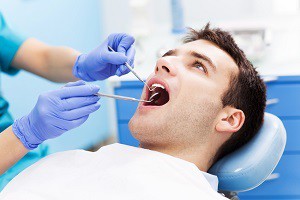Written by Greg Arnold, DC, CSCS. After 2 days of rinsing, the propolis rinse group reduced salivary levels of mutans streptococcus by 42.9% compared to a 26.1% reduction in the chlorahexedine group and an 18.1% increase in the placebo group.
Propolis is a resin-like material from the buds of poplar and cone-bearing trees and obtained from beehives and contains bee products. Propolis is often used for canker sores and also to increase immune system strength because of its antioxidant and anti-inflammatory properties (1).
Now a new study (2) suggests that propolis may be a further benefit to oral health. The study involved 60 subjects (24 men, 36 women) aged 28 to 54 with levels of mutans streptococci greater than 100,000 colony-forming units per milliliter of saliva. They received 1 of 3 treatments:
- An alcohol-free rinse of containing 2% propolis (20 subjects)
- A rinse of chlorhexidine 0.12%, a chemical used in mouth rinses with documented benefits on oral health (3) (20 subjects)
- A placebo rinse (20 subjects)
Each subject rinsed with 15 milliliters of their assigned rinse for 1 minute, twice daily for 28 days. Before and after the rinse period (day 28) and then 17 days after rinsing was stopped, each subject had the mutans streptococcal and lactobacilli levels in their mouth measured with a Dentocult SM test. A treated plastic strip was inserted into the mouth and rotated on the surface of the tongue about 10 times.
After 2 days, those in the propolis group had a 42.9% decrease in salivary levels of mutans streptococcus (2.1 to 1.2) compared to a 26.1% decrease in the chlorhexidine group (2.3 to 1.7) and an 18.1% increase in the placebo group (2.2 to 2.6) (p = 0.001). For salivary levels of lactobacilli, those in the propolis group had a 13.8% decrease (2.9 to 2.5) compared to a 11.5% decrease in the chlorhexidine group (3.5 to 3.1) and a 11.1% increase in the placebo group (2.7 to 3.0) (p = 0.033).
During the 17-day follow-up after supplementation stopped, those in the propolis group had a 16.7% increase in mutan streptoccous levels (1.2 to 1.4), a 11.7% increase in the chlorhexidine group (1.7 to 1.9) and no change in the placebo group (2.6 to 2.6) (p = 0.001), showing the need to continue application of both propolis or chlorhexidine to maintain oral health. As for lactobacilli levels, no statistical significance was reached between the groups (p = 0.220).
For the researchers, “Typified propolis rinse was effective compared to existing and placebo therapies.”
Source: Netto, Camillo Anauate, Maria Cristina Marcucci, Niraldo Paulino, Andréa Anido-Anido, Ricardo Amore, Sergio de Mendonça, Laurindo Borelli Neto, and Walter Antonio Bretz. “Effects of typified propolis on mutans streptococci and lactobacilli: a randomized clinical trial.” Brazilian dental science 16, no. 2 (2013): 31.
Posted June 8, 2016.
Greg Arnold is a Chiropractic Physician practicing in Hauppauge, NY. You can contact Dr. Arnold directly by emailing him at PitchingDoc@msn.com or visiting his web site at www.PitchingDoc.com.
References:
- “Propolis” posted on the NIH website
- Anauate Netto C. Effects of typified propolis on mutans streptococci and lactobacilli: a randomized clinical trial. Braz Dent Sci. 2013;16(2):31-36.
- Autio-Gold J. The role of chlorhexidine in caries prevention. Oper Dent. 2008; 33:710–716.

